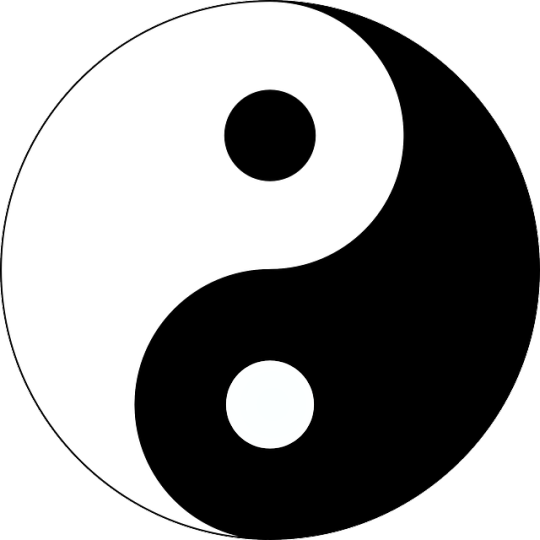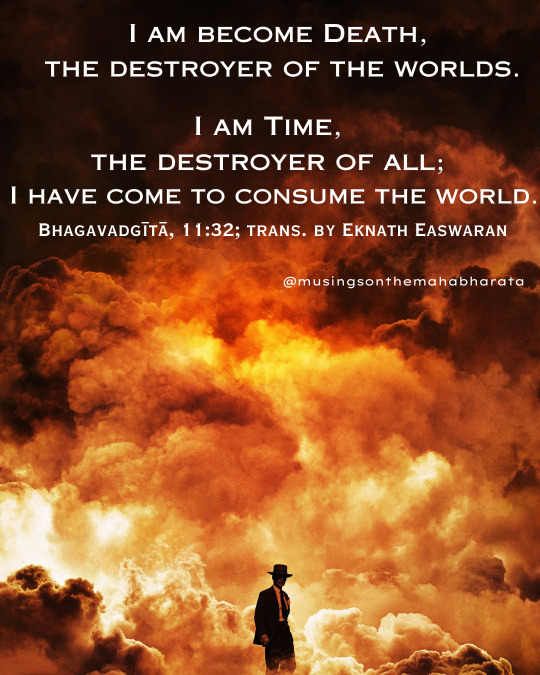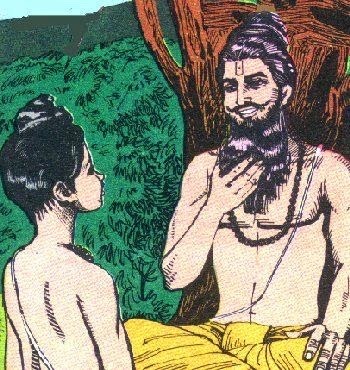#Eastern Philosophy
Text
Understanding someone's suffering is the best gift you can give another person. Understanding is love's other name. If you don't understand, you can't love.
Thich Nhat Hanh
#Thich Nhat Hanh#quotes#philosophy#wisdom#life#literature#writer#books#psychology#write#understanding#suffering#love#eastern philosophy#art#artist#idea#ideas
623 notes
·
View notes
Text

“When the holy Bodhisattva Avalokitesvara had truly grasped the transcendent wisdom, he realized that visible form is only illusion. The same applies to its perception, to its names and categories, to discriminative intellect and finally even to our consciousness. They are all illusion. With this realizaton he was beyond all sorrow and bitterness.
Disciple Sariputra! The material is not different from the immaterial. The immaterial and the material are in fact one and the same thing. The same applies to perception, concepts, discriminative thinking and consciousness. They are neither existing nor not existing.
Sariputra! All things therefore they are in themselves not good and not bad, they are not increasing and not decreasing.
Therefore one may say there are no such things as form, perception, concepts, thinking process, and consciousness. Our senses such as eye, ear, nose, tongue, body and mind are misleading us to illusion; thus one may also say there is no reality in visible form, sound, smell, taste, touch and mindknowledge. There are also no such things as the realms of sense from sight up to mind, and no such things as the links of existence from ignorance and its end to old age and death and their end. Also the caturāryasatyāni are nonexistent, just as there is no such thing as wisdom and also no gain.
Because the holy Bodhisattva who relies on transcendent wisdom knows that there is no gain, he has no worries and also no fear. Beyond all illusion he has reached the space of highest Nirvana.
All Buddhas of the past, present and future, found highest perfect knowedge because they relied on transcendental wisdom.
Therefore we ought to know that the great verse of the transcendent wisdom is unsurpassed in its splendor, and that it appeases truly all pain. It reads:
GATE, GATE, PARAGATE, PARASAMGATE BODHISVAHA!”
-The Heart Sutra.
#buddhism#buddhist#books#history#literature#religion#theology#mysticism#esotericism#religious#philosophy#sutra#eastern philosophy#mahayana#Mahayana Buddhism#dharma#Dharmic#India#china#Thangka#buddhist art#art#asian art#aesthetic#religious quotes#religious aesthetic#tradition#traditionalism#traditional art
24 notes
·
View notes
Text

"Life is an ever-expanding expression of temporary change, revealing ourselves within each and every shedding phase. Each lesson pertaining to fractals of a reflection; a projection of an immaculate conception."
~Mise-n-abyme
|Artwork: 'The Creator'– Michael Fishel, 1977
#occult#mysticism#esoteric#alchemy#meditation#eastern philosophy#wisdom#spirit#spirituality#hermeticism#words#self development#philosophy#duality#look within#ancient wisdom#knowthyself#forbidden knowledge#samsara#nonduality#mystical#magick#initiation#writers and poets#gnosis#transcendental#taoism#buddhism#divine life#forgotten history
43 notes
·
View notes
Text

-Kahlil Gibran, The Prophet
“self is a sea boundless and measureless.”
#mindfulness#literature#english literature#meditation#prose#kahlil gibran#khalil gibran#gibran#self knowledge#truth#soulfood#soulful#soul#eastern philosophy#lebanon#philosophy
164 notes
·
View notes
Text

Lego Tao Trio
Eastern and Western philosophies together.
Source
Creator: Shifter-Eternal
#lego#bionicle#pokemon#reshiram#zekrom#kyurem#unova#gen 5#gen 5 pokemon#taoism#black and white#legendary#legendary pokemon#alchemy#dragon#dragon-type pokemon#western alchemy#philosophy#eastern philosophy#western philosophy#draconic#reptile#reptilian
30 notes
·
View notes
Text
“Its names vary, but its essence does not…”
— Bodhidharma
#buddhism#art#literature#spirituality#poetry#meditation#philosophy#zen#history#writing#enlightenment#books#painting#quotes#buddha#poem#reading#poems#eastern philosophy#inspiration
108 notes
·
View notes
Text


"As to the roaming of sages, They move in utter emptiness, Let their minds meander in the great nothingness; They run beyond convention And go through where there is no gateway. They listen to the soundless And look at the formless, They are not constrained by society. And not bound to its custom."
- Lao-Tzu
#austin osman spare#visionary artist#magician#chaos magick#magic#magick#art#rumi#sufism#sufi#poet#bard#lao tzu#daoism#taoism#book of changes#eastern philosophy#western philosophy#western occult#western hermeticism#western esotericism#heretics#heretic#occult#esoteric#ergo#sphinx#duality
511 notes
·
View notes
Text
My meditation these days is a cup of tea, each sip opens like a new door to another world. There is a whole connection between the intake of something warm into my body and the way it releases me into a deep contemplative state...
Random Xpressions
32 notes
·
View notes
Text

“Man is the only creature that consumes without producing. He does not give milk, he does not lay eggs, he is too weak to pull the plough, he cannot run fast enough to catch rabbits. Yet he is lord of all the animals.”
-George Orwell
#thekbsmusic#bookworm#book review#book quotes#books & libraries#bookstagram#books and reading#booklover#booksbooksbooks#bookshelf#books#book recommendations#philosophy books#philosophy#reading#reads#short reads#good reads#george orwell#eastern philosophy#western philosophy#politics#political philosophy#government#socioeconomic#socioeconomics#sociopolitical
21 notes
·
View notes
Text
What is Taoism?

Taoism originated in China between 600 and 500 BC, but the roots of Taoism can be traced back to shamanic practices from the earliest tribal communities. The Chinese word for shaman (wu) was first recorded during the Shang Dynasty (1600-1046 BC), but it is believed that these traditions date back to the very origins of Chinese culture. In fact, many of the stories surrounding Fu Hsi (or Fu Xi), the mythological founder of Chinese civilization are very shamanic. For example, Fu Hsi is considered the originator of the I Ching, an ancient Chinese divination text and the basis of Chinese thought. According to legend, he discovered the symbols of the I Ching in the pattern of markings on the back of a turtle that emerged from a river. This is a classic shamanic tale that combines nature and divination, resulting in the attainment of profound knowledge.
Philosophical Taoism, often represented by the yin-yang symbol, emphasizes living in harmony with the Tao (the Way), or Ultimate Reality, a presence that existed before the universe was formed and which continues to guide the natural world and everything in it. Tao is the ultimate source and way (or process) of nature and the universe. To live in harmony with the Tao is to go with the flow of life rather than against it. It is a way to conserve life's vitality by not expending it in the useless ways of friction and conflict. Early Taoists perceived that the ultimate nature of this mysterious force was beyond intellectual comprehension but could be discerned by the intuitive mind. The sages observed that through meditation, one could attain Tao or communion with the way of the universe itself.
Through meditation and other devotional activities, Taoists seek to bring their lives into accord with the Tao. They believe that by abiding in the Tao, or in harmony with the Cosmos, one may attain a state of such inner clarity and insight that all actions become synchronous and spontaneously correct. They refer to this state of harmony with nature and the universe as wu wei, or "non-doing." Non-doing is not a withdrawal from action, but rather the achievement of a higher kind of action: action in accord with the natural order. The concept of wu wei more closely suggests a way of existing without conscious effort, as nature does. Such a person knows what to do by abiding in a state of quietism, by letting go of all worldly thought so that the creative force of the Tao may enter their minds and bodies. Such accord with the Tao allows one to accomplish things without effort in a way that benefits everyone.
Taoism is an inner way as well as an outward path. One should outwardly "go with the flow" while inwardly adhering to one's true nature. Taoists seek to integrate inner and outer experiences while uniting body, mind and spirit into a harmonious whole. Taoism views humanity as a microcosm of the macrocosm we call the universe. Each human being is a hologram of the Cosmos, a weaving together of universal information from a particular point of view. Essentially, we are the universe experiencing itself in human form.
Taoists equate the body with the earthly realm, the mind with the human realm, and the spirit with the heavenly realm. By bringing the body, mind and spirit into accord, one transforms personal experience and influences the interactions of the three cosmic realms. Following the Tao is a journey requiring simplicity, balance and introspection. The lifelong quest of the Taoist is to identify their innermost purpose in life, and then use every means at their disposal to achieve it.
89 notes
·
View notes
Text

Now I am become Death, the destroyer of the worlds.
*Note, a more accurate translation is:
I am Time, the destroyer of all; I have come to consume the world.
BG: 11:32; trans. Eknath Easwaran.
Sometime ago, I was involved in a discussion about whether it was blasphemous for Oppenheimer to have quoted from the Bhagavadgītā upon seeing the explosion triggered by the atomic bomb he constructed. I was of the opinion that it was not. The opposing view was that Kṛṣṇa’s demolition was one of divine nature, whereas Oppenheimer’s manmade atomic bomb was not. Whereas, in this perspective, Kṛṣṇa’s violence and destruction were justified through Kṛṣṇa’s inherent divinity, Oppenheimer’s humanness disfigured his destruction with greed and impunity.
I would maintain that, to one adhering to a non-dual outlook, there is no separation between Kṛṣṇa’s violence in the Bhagavadgītā (or, more accurately, in the Mahābhārata) and Oppenheimer’s manmade, humane violence. Violence is violence, and divinity (or Consciousness) is inherent in the fabric of that, as it is in all that is. The genius of Oppenheimer’s brain which created such a formidable and terrible invention functions on the same patterns that enable and are Kṛṣṇa’s destruction. There is nothing more inherently divine in death by astras (supranatural weapons controlled and imbued by mantras central to the Kurukṣetra war) than death by atomic bomb.
Not only do I argue that it was not blasphemous for Oppenheimer to quote the BG and internalise his work through its prism (and, incidentally, is blasphemy anything but a dual social construct? Can Consciousness be blasphemous of itself?), but I argue that this is exactly how the Bhagavadgītā is lived in direct experience. The Bhagavadgītā and the Mahābhārata are not lifeless ancient texts that are only accessible or relevant in an esoteric, abstract realm. The BG and the Mbh are lived here and now, from a moment to moment unfolding. I would maintain that we cannot pick and choose what we like from these texts or what aligns to our morals (such as teachings on goodness) and disregard the rest — or take it metaphorically. The last parvas of the Mbh are incredibly violent and include gory descriptions of war, and the BG occurs on the battlefield of said war. This, in my view, does not signify that the texts glorify violence — no more than they glorify any other aspect of creation. It is a sign that violence exists as a natural development of the triadic cycle of creation (creation — preservation — destruction), and it is a manifestation of Consciousness.
The Bhagavadgītā coming alive to Oppenheimer upon witnessing his own potential for destruction is a testament to the BG’s existence in the collective consciousness as an expression of truth, pulsing and flowering for the one who expands their individual consciousness enough to tap into it and to allow it to manifest through themselves.
#krishna#bhagavadgita#mahabharata#mahabharat#oppenheimer#film#film review#christopher nolan#robert oppenheimer#cillian murphy#nonduality#nondual#philosophy#hindu philosophy#eastern philosophy
22 notes
·
View notes
Text
What you think, you become What you feel, you attract. What you imagine, you create.
Buddha
#buddha#quotes#philosophy#wisdom#life#literature#writer#books#psychology#write#art#artist#idea#ideas#eastern philosophy
47 notes
·
View notes
Text

“When Svetaketu was twelve years old, he was sent to a teacher with whom he studied until he was twenty-four. After learning all the Vedas, he returned home full of conceit in the belief that he was consummately well-educated, and very censorious.
His father said to him, "Svetaketu, my child, you are so full of your learning and so censorious, have you asked for that knowledge by which we hear the unhearable, by which we perceive what cannot be perceived and know what cannot be known?" "What is that knowledge, sir?" asked Svetaketu.
His father replied, "As by knowing one lump of clay all that is made of clay is known - so, my child, is that knowledge, knowing which we know all."
"But surely these venerable teachers of mine are ignorant of this knowledge; for if they possessed it they would have imparted it to me. Do you, sir, therefore, give me that knowledge?"
"So be it," said the father... And he said, "Bring me a fruit of the nyagrodha tree." "Here it is, sir." "Break it." "It is broken, sir." "What do you see there?" "Some seeds, sir, exceedingly small." "Break one of these." "It is broken, sir." "What do you see there?" "Nothing at all."
The father said, "My son, that subtle essence which you do not perceive there - in that very essence stands the being of the huge nyagrodha tree. In that which is the subtle essence of all that exists has its self. That is the True, that is the Self, and thou Svetaketu art That."
"Pray, sir", said the son, "tell me more." "Be it so, my child", the father replied; and he said, "Place this salt in water, and come to me tomorrow morning."
The son did as he was told.
Next morning the father said, "Bring me the salt you put in the water."
The son looked for it, but could not find it, for the salt, of course, had dissolved.
Tha father said, "Taste some of the water from the surface of the vessel. How is it?" "Salty." "Taste some from the middle. How is it?" "Salty." "Taste some from the bottom. How is it?" "Salty."
The father said, "Throw the water away and then come back to me again."
The son did so; but the salt was not lost, for the salt existed forever.
Then the father said, "Here likewise in this body of yours, my son, you do not perceive the True; but there, in fact, it is. In that which is the subtle essence, all that exists has its self. That is the True, that is the Self, and thou, Svetaketu, art That."
-Chandogya Upanishad.
#books#history#literature#religion#theology#mysticism#esotericism#religious#Hinduism#bhagavad gita#vedas#upanshid#hindu#hindu theology#quotes#hindu quote#dharmic#India#South Asia#eastern philosophy#metaphysics#philosophy#aesthetic#girlblogging#lana del ray#lana del rey#ldr#coqeutte#religious quotes#religious aesthetic
11 notes
·
View notes
Text

"Through the initial workings of the mind, we have the ability to conceive of a reality which beholds the essence of an ancient spirit; expressing dutiful reckonings of Being through moments which reign endless teachings." ~Mise-n-abyme
|Artwork: 'Birth of Athena', Atalanta Fugiens —Michael Maier (17h century)
#occult#esoteric#alchemy#wisdom#spirit#mysticism#self development#spirituality#words#hermeticism#ancient philosophy#writers and poets#ancient wisdom#philosophy#nonduality#duality#western esotericism#eastern philosophy#transcendental#know thyself#mystical#magick#gnosis#gnostic#law of the universe#as above so below#forgotten history#forbidden knowledge#mindbodysoul#mindbodyspirit
18 notes
·
View notes
Text
David Bowie employed his artistic endeavours as a means to delve into the depths of his profound interests, among which was his enduring fascination with Buddhism and broader Eastern philosophy. His exploration of these themes became a distinctive thread woven into the rich tapestry of his creative expression.
Bowie was introduced to the power of Buddhism and other Eastern philosophies by his older half-brother, Terry Burns, who had a tremendous impact on how his life and career would turn out. Burns also opened Bowie’s mind up to total creativity with the works of Beat Generation writers such as William S. Burroughs, modern jazz, and even the occult. Many of what would become his artistic hallmarks can be traced back to these formative influences.
In the early years, when Bowie was still trying to find his feet as an artist, his fascination with Buddhism made its way into his work. The first song to contain his interest in religion is ‘Silly Boy Blue’ from 1967’s self-titled debut album. Years later, Bowie would claim that he wrote the song ‘Karma Man’ about the ongoing strife between Tibet, the home of the Dalai Lama, the leader of ‘Yellow Hat’ Tibetan Buddhism, and China, who annexed it in 1951.
Bowie developed his interest in Tibetan Buddhism in 1965. In addition to what his brother showed him, this materialised after reading Nazi SS Sergeant Heinrich Harrer’s 1952 memoir Seven Years in Tibet. It retold his experiences in the country between 1944 and the Chinese annexation.
Speaking to Melody Maker in 1966, Bowie outlined his love for Tibet, stating: “I want to go to Tibet. It’s a fascinating place, y’know. I’d like to take a holiday and have a look inside the monasteries. The Tibetan monks, Lamas, bury themselves inside mountains for weeks and only eat every three days. They’re ridiculous – and it’s said they live for centuries.”
Although Eastern philosophy and Buddhism greatly influenced the counterculture of the 1960s, Bowie was serious in his dedication to the faith, and it would remain for decades after the zeitgeist changed. In 1966, he visited the North London Buddhist Centre, Tibet House, and spoke to one of its teachers, Chime Yong Dong Rinpoche, with whom he would become lifelong friends.
Introducing ‘Silly Boy Blue’ at the Tibet House Benefit in 2001, Bowie explained: “I stumbled into the Buddhist Society in London when I was about seventeen. Sitting in front of me at the desk was a Tibetan lama, and he looked up and he said, ‘Are you looking for me?’ He had a bad grasp of English and, in fact, was saying, ‘Who are you looking for?’ But I needed him to say, ‘You’re looking for me.’ It’s absolutely true!”
Bowie recalled: “So he became my friend and teacher for quite some time. His name is Chime Yong Dong Rinpoche and he now is head of [he was Curator of Ancient Tibetan Manuscripts] at the British Museum in London. This was ’65, ’66. That’s when I met him. Around that time, I wrote this next song… ‘Silly Boy Blue’.”
Bowie also introduced Rinpoche to his friend Tony Visconti, who also became his student. Looking back on their significant first meeting, Lama Chime Tulku Rinpoche told The Telegraph in 2016: “I said, ‘Come in, young man. Why did you come to see me?’ He said, ‘I want to become a monk.’ I asked him, ‘What is your talent?’ And he said music. I said, so then don’t become monk; you do the music. And from that day, that is what he did."
youtube
#david bowie#silly boy blue#buddhism#eastern philosophy#karma man#1950s#50s#1960s#60s#tibet#tibetan buddhism#dalai lama#china#seven years in tibet#heinrich harrer#tony visconti#guru rinpoche#rinpoche#chime yong dong rinpoche#buddhist#Youtube
7 notes
·
View notes
Text
Getting Through the Dark Night
#ancient chinese wisdom#eastern philosophy#inspirational quotes#life lessons from monkey king#monkey king quotes#mythical wisdom#mythological insights#classic chinese literature#journey to the west#modern life advice
7 notes
·
View notes